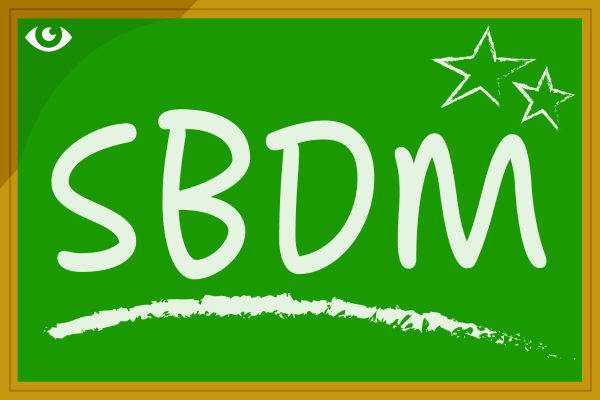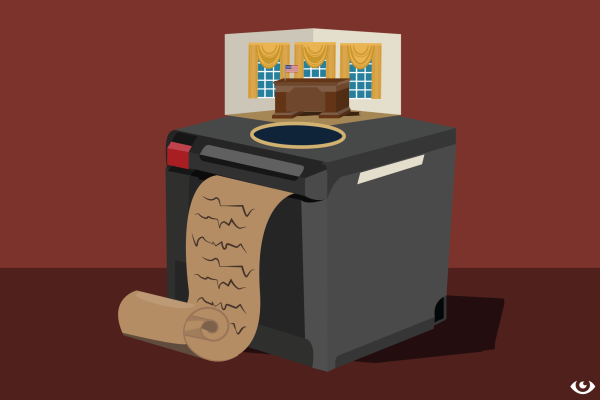Let’s talk about tests, baby: A guide to high school standardized tests
Anna McMahon (11) looks over her AP World History study book surrounded by other study books she will use.
With Practice SAT (PSAT) scores arriving tomorrow, students may have a lot of questions. What do they actually mean? Why is it the SAT instead of the ACT? Why are there so many different tests?
So, even though no one really asked for it, here is a comprehensive resource for some of the most important tests you may take in high school.
PSAT
Why do students take it?
Firstly, there are three different PSAT tests, the PSAT 8/9, PSAT 10, AND PSAT NMSQT. The PSAT 8/9 is more of a baseline establishing test which cannot be used for any purpose other than to prepare eighth and ninth grade students on how they might do on the SAT. The PSAT 10 is another pre-test that students can use as a baseline but some schools or programs will accept these scores (such as Governor Scholar’s Program.) Then, the PSAT NMSQT stands for the PSAT National Merit Scholar Qualifying Test and, like its title says, can potentially qualify juniors for the National Merit Scholar program.
The PSAT NMSQT is one of the strongest indicators of how a student might do on the SAT because each level of the PSAT has question content that coincides with the learning level, and junior year content is most similar to the SAT. The pros of taking the PSAT are that, as a junior, there are scholarship opportunities and the College Board provides free study resources through Khan Academy.
When do students take it in school?
Manual doesn’t offer the PSAT 9 currently but in mid-fall, they offer the PSAT 10 and PSAT NMSQT on the same day during school.
How do students sign up? How much does it cost?
Only schools administer the PSAT tests as of now, so there is no signing up necessary. This also means that you may only be able to take the PSAT 10 or PSAT NMSQT if your school doesn’t administer the PSAT 8/9.
Even though the school pays for the test, students contribute through the fees that they pay at the beginning of the year.
What are some study resources?
The College Board offers two free practice tests on their website. In addition, if students create a Khan Academy account, the College Board will sync their scores from practice tests to their SAT study program. They have practice questions and lessons specifically for the PSAT and it’s completely free. Lastly, students can always pick up a study book. They tend to range from $10-$20, but most libraries, including Manual’s, have study books that students can check out and then make copies of the practice tests in. This applies to all of the tests in this article except the K-PREP.
How is it graded?
The number of questions that the student answers correctly is called their raw score, which is then converted into a scaled score. This score takes into account the range of difficulty within the section, where some questions may contribute more to the score than others. That score per section ranges from 160-760 points. The two scores of Evidence-Based Reading & Writing are combined, and then the No-Calculator Math is combined with Calculator Math for final scores. They are finally combined to make a final score out of 1520 points.
Subscores are also offered which demonstrate the student’s performance in certain skill areas such as “Heart of Algebra” and “Expression of Ideas.” For both tests, students also receive a selection index which is the sum of their raw scores (the number of correct answers total) multiplied by two, which is a basis for how one might place in the National Merit Scholar program.
What is the National Merit Scholar program?
When juniors take their PSAT NMSQT, they have the opportunity to mark on their test if they want their scores to be added to the National Merit Scholar pool. About 50,000 of the 1.6 million students that qualify for taking the test get recognition for their scores and will be notified a year after they take their test.
Schools will notify 34,000 of those students that they were commended, while 16,000 will become National Merit Semifinalists. The commendation of students is based on the national percentile so the estimated selection index to qualify students for commendation for the 2019 PSAT NMSQT is 212. The selection of semifinalists is based on the top percentile within the state, so the estimated qualifying score for Kentucky in 2019 is 218.
About 15,000 of the Semifinalists move on to be Finalists, which is a reassuring 90%. However, if those students wish to enter themselves into qualifying for National Merit Finalist, they must fulfill certain requirements. They must complete the NMS application, which includes an essay, have a record of high academic achievement in grades 9-12, and have an SAT or ACT score that coincides with their high PSAT score.

From those Finalists, about 7,600 are chosen to receive National Merit Scholarships. In every state, there is at least one winner of the 2,500 $2,500 scholarships. There are also Corporate-Sponsored scholarships offered. Lastly, certain sponsor colleges will provide scholarships ranging from $500-2,000 per year.
All of this information can be accessed here.
ACT
Why do students take it?
The ACT is a universal admission test that schools accept scores for and many schools require. The test is different from the SAT because the content is written to test the “essentials for college and career readiness.” Even though the ACT may have easier content, it is a time-crunched test that may lead a lot of students to feel they’re being rushed. All reading is at a 9th-grade reading level but students only have 50 seconds to answer any of the questions per passage. In math, students must also be able to do math problems at a faster pace due to the ticking clock. As well, the ACT has a science section that relies highly on the interpretation of graphs and some general science knowledge, so students that feel unconfident in these areas may want to choose the SAT. Lastly, one last advantage of taking the ACT is that the score report includes a comparison to national benchmarks for every student to have a feel for college and career readiness even further.
When do students take it in school?
Manual offers several Practice ACTs throughout your first three years in high school. In the early fall, juniors have the opportunity to take a Practice ACT and then take an official ACT test in the spring. This year, juniors will take the test on March 12 and underclassmen will take Practice ACTs that day. All of these are free tests that come with a test prep program.
How do students sign up? How much does it cost?
In-school tests do not require registration, but to register for a testing date not during school, students must create an ACT account and then set aside forty-five minutes to fill in the questions and information they ask of you. In the registration process, the ACT collects several preferences for future majors, colleges and careers which may take up a lot of time. You can see the testing dates on their website here.
The cost of the ACT is $39.50 normally and $56.50 with the writing section.
What are some study resources?
As mentioned previously, when underclassmen take Practice ACTs, they gain access to Triumph Test Prep which analyzes Practice ACT scores to create a personalized study plan with areas of the test that students can improve upon. The website also has a couple of full practice tests that students can take. As well, the ACT offers two paid review resources that are located here: ACT Rapid Review and ACT Online Test Prep.
How is it graded?
The ACT is scored out of 36 which is a composite of the four tests that students take in a session. Every score is similar to the SAT in the way that they take the number of correct answers, or the raw score, then multiply it by a scale. There is an interactive score report that can better explain the details of what the score report for an ACT test may feature here.
What are the new opportunities being offered with the act?
The ACT will start offering several new testing opportunities starting in September 2020. They are offering section retakes rather than retaking the entire test, which will allow students to raise their composites without having the stress of taking a full test.

In addition, the option of online testing will be available at certain testing locations which equates to receiving multiple-choice results in as soon as two business days afterward. Lastly, composites will now be made up of the best scores that students have in each section, so if students have a 23 and a 19 on reading, then a 26 and 31 on math, the 31 and 23 will be contributing to the composite even if they were taken on different test dates.
SAT
Why do students take it?
The SAT is another universal college entrance exam that every school in the United States accepts scores from (many will require a score from it or the ACT). The SAT is different from the ACT significantly because of the increase in time for testing, yet the questions are known for their “trickiness.” The reading is closer to the college level with a focus on historical documents and classical literature. In addition, there is a no-calculator math section which means that students taking this test should feel confident in those skills. Also in the math section, there are “blank questions” rather than multiple choice which means students must also be confident in writing in an answer rather than having multiple options. However, there is no science section so that’s a plus for some students. One of the largest advantages of taking the SAT is that there are personalized study resources through the College Board on Khan Academy.
How do students sign up? How much does it cost?
Students have to make a College Board account, then sign-up is on their website located here.
The test costs $43 normally and $54 with writing.
What are some study resources?

As previously stated, the College Board will sync practice test scores to Khan Academy for a personalized study plan. They also have practice tests on their website located here.
How is it graded?
The total score ranges from 400-1600 points. It’s made up of adding the Evidence-Based Reading & Writing and No-Calculator & Calculator Math scaled scores together. The way of scoring the SAT is very similar to how the PSAT is scored, but no selection index is included.
SAT Subject Tests
Why do students take it?
SAT Subject Tests are primarily made to showcase skills that students feel can’t be shown through the regular SAT, such as foreign languages or anything other than English. Some colleges require that students take some subject tests and a list of those colleges can be located here, but even if your dream college doesn’t require them it is still a valuable opportunity to highlight student’s academics in a way that standardized tests such as the ACT and SAT can’t. The tests also don’t require the same type of information that AP tests require as the questions are based on the general curriculum. A list of all of the tests offered is located here.
How do students sign up? How much does it cost?
The same applies to the SAT where you must have a College Board account made to sign up for a test. Students can take up to three tests per test date and can register here. Tests are given every SAT test date but not all of them are given every single test date. A list of those is located here.
Each test costs $26 but an in-depth description of the ins and outs of registration fees can be accessed here.
What are some study resources?
The best bet for studying for one of these tests is to pick up a study book, and fewer libraries offer SAT Subject Test study books for check out, so that may be a potential purchase. However, each test has an in-depth outline of what content will be featured on the test and can be accessed here.
How is it graded?
Each test is scored on a 200-800 point scale. The score report also includes percentile information so students can see how they scored in comparison to students around the country. For example, if students are in the 80th percentile, they scored better than 80% of the country.
What are all of the sections?
All of the tests are an hour long but they each have different layouts. Those can be discovered here.
AP Exams
Why do students take it?
AP tests tend to be a no-brainer at Manual, as a majority of students take AP classes then follow it up with an exam. If a student passes an AP test, many colleges will accept that class for college credit. However, some schools do not accept credit for certain tests or they require that the student score a four or five. Research your school and whether they accept credits here.
When do students take it in school?
AP week is in the first couple weeks of May, and for 2020 the AP tests will be taking place from May 4- May 15. The College Board website features a calendar here.
How do students sign up? How much does it cost?
Teachers will provide students their AP test code which then needs to be entered into their College Board account to register online. Then, fees are paid to whoever is collecting them, which at Manual is Mrs. Romans in the MAC Lab. Tests can range from $94-124 and a full list of those prices is located here.
What are some study resources?
Khan Academy does not offer the same personalized study schedule, but several AP courses have Khan Academy courses as well. The courses include lessons, videos, and practice questions, which can be very helpful to students studying for a stimulus-based test such as APUSH, AP Euro or AP World. As well, there are resources on YouTube that many people point to such as Tom Richey or Crash Course. There are also a variety of study books offered by companies and schools like Princeton and Barron to help you review the content on your own time. Lastly, teachers are usually very willing to recommend study sources if students ask, as they know their stuff and want to help students score as highly as they wish.
How is it graded?
There is a final score for the tets ranging between a zero and five. However, each test has a different weight depending on which sections they include. A guide to those varying tests is located here.
What are all of the sections and how long are they?
Almost every test is different in both of these aspects, so here is a guide to all of them here.
K-PREP
Why do students take it?
K-PREP tests are state-mandated tests that measure student proficiency in Kentucky standards in public schools. Students in public schools took the Math and English tests in grades third through eighth and are required to take the Science and On-Demand tests their junior year.
When do students take it in school? How much does it cost?

Near the end of the school year before finals week, juniors will take the Science and On-Demand tests.
It’s a state-mandated test so students do not have to pay any costs for taking it.
What are some study resources?
Studying for the K-PREP is insignificant because one, this score reflects on the school rather than the student and two, the content on the test should be relatively easy content that you have learned throughout your academic career.
How is it graded?
Each section is graded on a scale from Novice to Distinguished.
Donations are collected through The Publishers, duPont Manual High School’s booster club for J&C. Your donation will support the student journalists of duPont Manual High School. Your contribution will provide equipment and cover annual website hosting costs.













